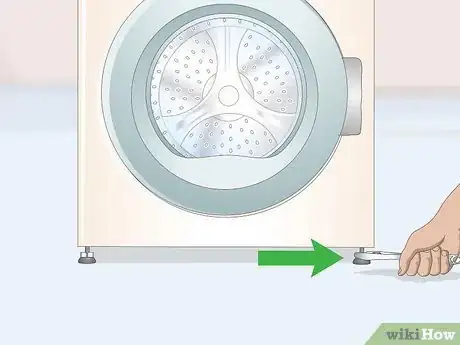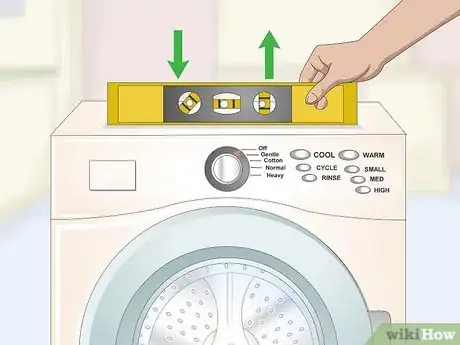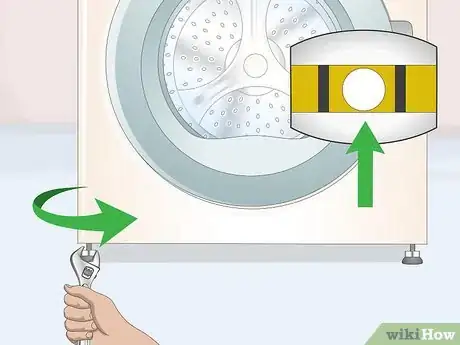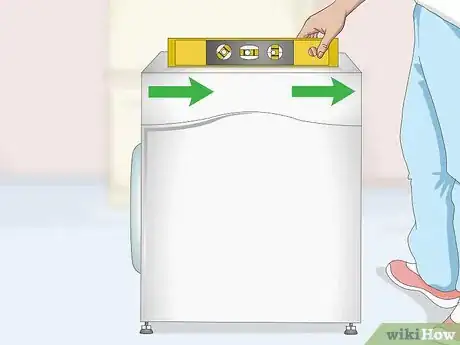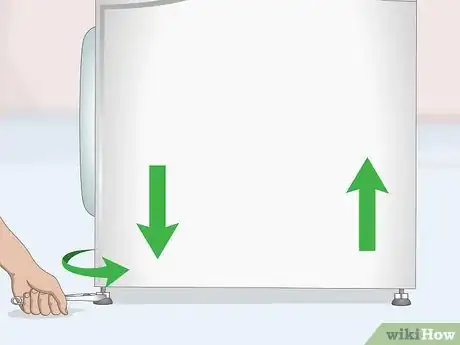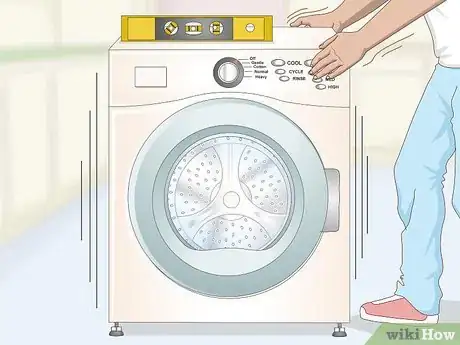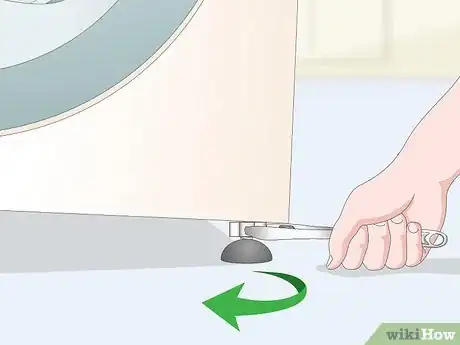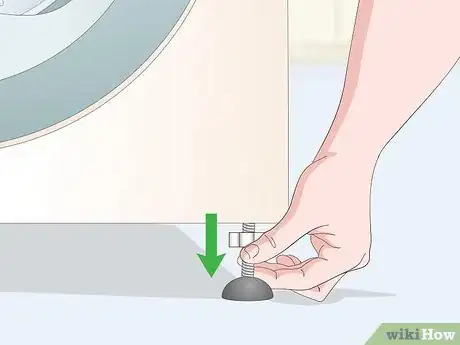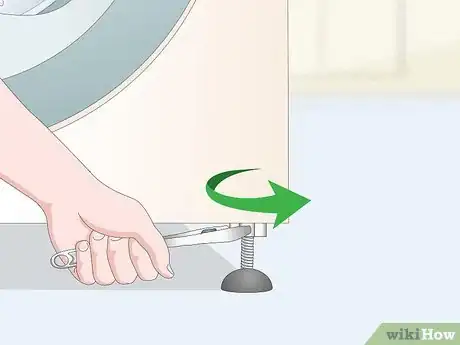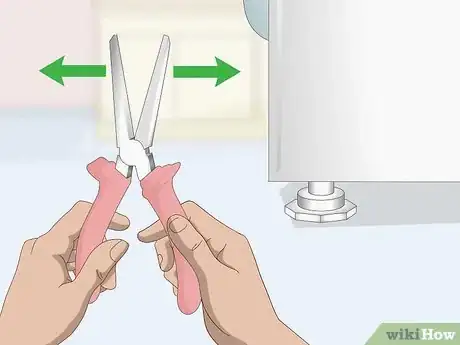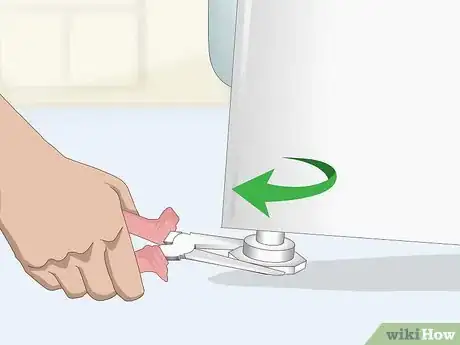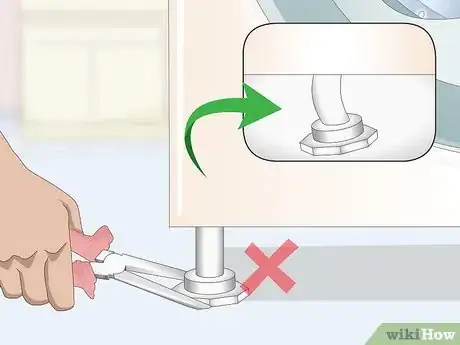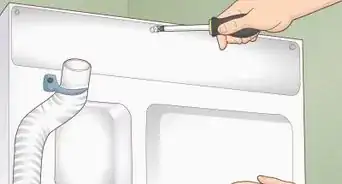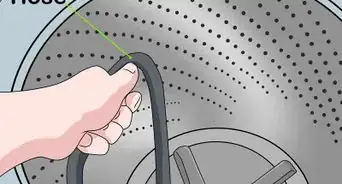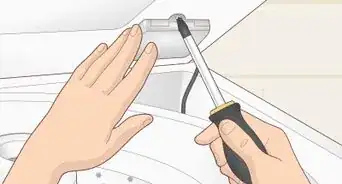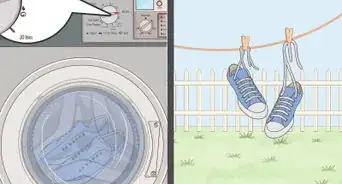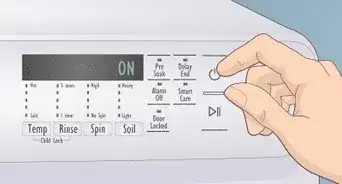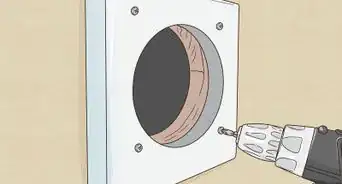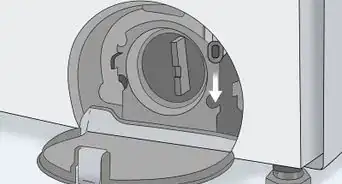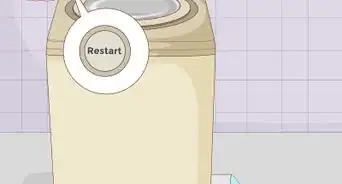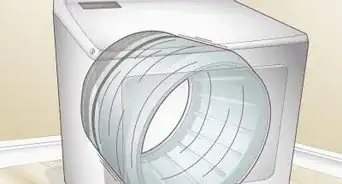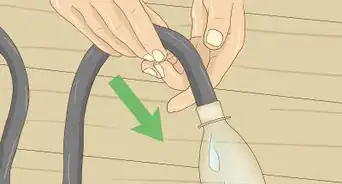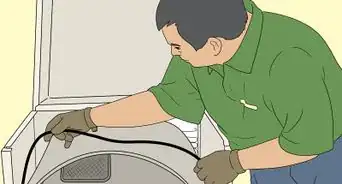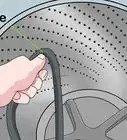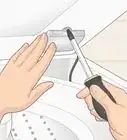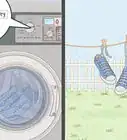This article was co-authored by Homer Flores and by wikiHow staff writer, Christopher M. Osborne, PhD. Homer Flores is an Appliance Repair Specialist and Training Manager at PreFix, a home maintenance company out of Austin, Texas. With over 15 years of experience, Homer specializes in home improvement, remodeling, and construction. Homer’s dedication to the PreFix mission of providing hassle-free one-stop-shop service for home care, in addition to their completion of the Capital Factory and Techstars Accelerators, has contributed to their growth of service to over 50 zip codes throughout the greater Austin area.
There are 10 references cited in this article, which can be found at the bottom of the page.
This article has been viewed 82,124 times.
If you’re installing or relocating a washing machine, or are wondering why your current machine is rocking from side to side, it’s important to make sure it’s level. You’ll often only need a spirit level and either a wrench or adjustable pliers to level the machine, which in turn will make it run more quietly and efficiently. The process of using a spirit level and making minor leg length adjustments is essentially the same no matter the type of washing machine, but there are slight differences in how you actually adjust metal versus plastic legs.
Steps
Levelling from Side-to-Side and Front-to-Back
-
1Start with the legs as short as possible when installing a washer. Washing machines have adjustable legs that can extend out several inches/centimeters as needed in order to level the machine. However, the machine will be more stable if the legs are extended as little as is necessary to level the washer. So, if you’re installing a new washer or relocating an existing one, make sure all the adjustable legs are retracted fully before putting the machine in place.[1]
- You want to extend short legs in order to level the machine, rather than shorten long legs.
- Extended legs are more wobbly and prone to breaking.
- New washing machines normally come with the legs fully retracted.
-
2Lay a spirit level from side-to-side on top of the machine. The small bubble in a spirit level tells you if the surface is flat. There's a strong chance that the bubble will be off-center when you put it down, which confirms that your washing machine is uneven. Whichever side the bubble sways towards is higher off the ground.[2]
- Your goal is to adjust the machine until the bubble stays in the center of the tube.
- If the top of your washing machine is curved, look for a flat area— like the top of the control panel or the seam between the top and the cabinet.
Advertisement -
3Adjust one or both front legs until the spirit level bubble is centered. For metal legs, you’ll loosen the locking nut with a wrench, then turn the leg clockwise (to shorten it) or counterclockwise (to extend it). With plastic legs, use adjustable pliers to grip the leg and turn it either clockwise or counterclockwise. Make small adjustments, check the spirit level, and keep working until the bubble remains centered.[3]
- You can find more detailed directions for adjusting metal and plastic legs elsewhere in this wikiHow article.
- Some people prefer to reduce the pressure on the legs while adjusting them, out of concern that they might bend or snap. If you want to do this, lift the front of the washer and wedge a 4 in × 4 in (10 cm × 10 cm) wooden block under the front to hold it off the ground. Then adjust the leg(s), remove the block, check for level, and repeat as needed.[4]
-
4Level the machine from front-to-back (for self-levelling rear legs). Most modern washing machines have self-levelling legs in the back. So, if you turn your spirit level so it’s facing front-to-back on top of the washer and the bubble is centered, you’re all set. If it’s not yet level front-to-back, try the following:[5]
- Lift the back of the washer about 1 in (2.5 cm) off the ground and let it drop back down. Self-adjusting legs sometimes get stuck or rusted in place, and this maneuver will usually loosen them so they can self-level.[6]
- If the self-levelling legs still don’t budge after putting the weight of the machine on them, lift the back of the machine off the ground a little higher—about 4–6 in (10–15 cm)—so you can tap the back legs with the side of your wrench or pliers. This should loosen them.
-
5Do any needed front-to-back levelling (for manual-adjustment rear legs). Older washers, and perhaps a few modern models, might not have self-levelling rear legs. If they look just like the front ones—e.g., they have locking nuts and/or grip points for pliers—they’re not self-levelling and will need to be adjusted manually. If so, follow the same procedure as with the front legs:[7]
- Keep the level facing from front-to-back on a flat spot on top of the machine.
- Adjust both rear legs by small increments, check again for level, and repeat as needed.
- Prop the rear of the machine up with a 4 in × 4 in (10 cm × 10 cm) wood block, if desired.
-
6Rock the levelled machine back and forth as a final check. Even once your machine is completely level, one of the legs may not be touching the floor. This can happen if the floor is uneven—as might be the case for an old concrete slab in the basement. If your gentle rocking reveals this problem, extend the offending leg until it is touching the floor.[8]
- After you’ve levelled your washing machine, check it again every 6 months or so by rocking it and placing a spirit level on top (side-to-side and front-to-back). Washing machines can move out of position and out of level over time.
Adjusting a Metal Leg
-
1Loosen the locking nut with an adjustable wrench. Metal legs have a locking nut at the base of the leg, against the underside of the washing machine. Adjust the wrench until the jaws fit snugly against the locking nut, then turn the nut clockwise until it starts sliding down the leg. Stop once the nut is around 0.5 inches (1.3 cm) away from the washing machine’s underside.[9]
- To tighten an adjustable wrench, place the wrench’s jaws over the locking nut, then adjust the winch on the side of the wrench until the jaws grip the nut.
-
2Turn the foot to lower or raise the leg. You should be able to adjust the foot by hand. Pinch it between two fingers and rotate it clockwise if you want to shorten the foot. Turn the foot counterclockwise if you want to extend the foot.[10]
- It’s best to make slight adjustments—e.g., spinning the leg just 1 or 2 turns to lengthen or shorten it—then check for level again, and repeat as needed.
-
3Tighten the locking nut with your adjustable wrench. Once you've reached your target leg length, you need to lock the nut in place to make the change permanent. Put the adjustable wrench's jaws over the nut, tighten the jaws if necessary, and rotate the nut counterclockwise until it's tight against the base of the machine.[11]
- Just hand-tighten the locking nut until it is snug. If you over-tighten it now, it will be difficult to loosen in the future.
Making a Plastic Leg Longer or Shorter
-
1Adjust your pliers to fit the foot of the leg. Plastic legs are easier to adjust than metal ones, but it's difficult to do so by hand. Instead, grab some adjustable pliers and pull the handles of the pliers apart until the prongs are wide enough to grip the “feet” (the wider base) of the washing machine leg.[12]
- If the foot has an octagonal shape, you can instead use an adjustable wrench, if desired.
-
2Turn the legs to raise and lower the washing machine. Squeeze the handles of the pliers so the prongs are tight against the foot of the leg. Then, turn the leg clockwise if you want to lengthen it. Turn the leg counterclockwise if you want to shorten it.[13]
- As with metal legs, it’s best to make small adjustments and check for level frequently.
-
3Don’t extend plastic legs any further than is necessary. While they’re easier to adjust than metal legs, plastic legs are also more prone to bending, deforming, or breaking, especially if they are fully extended. While you’re leveling the washing machine, try to shorten one leg instead of extending another one.[14]
- If all the adjustable legs are already extended by more than about 0.5 in (1.3 cm), consider shortening them all to their starting positions and levelling the washer from scratch.
Warnings
- Find a helper, if possible, to lift the washer, even if you’re only lifting it a few inches. Washing machines are heavy and can cause back pain if you strain too much. If you’re propping the legs up with a wooden block while adjusting them, for instance, one person can take the machine's weight while the other puts the wooden block underneath.⧼thumbs_response⧽
Things You'll Need
- Spirit level
- Wooden block (optional)
- Helper (recommended)
Metal Legs
- Adjustable wrench
Plastic Legs
- Adjustable pliers
References
- ↑ https://www.samsung.com/za/support/home-appliances/how-to-level-the-front-load-washing-machine/
- ↑ https://youtu.be/QWlopmbXFC4?t=53
- ↑ https://www.mrappliance.com/blog/2018/may/how-to-level-a-washing-machine/
- ↑ https://youtu.be/PqNYoVBlNq0?t=64
- ↑ https://www.mrappliance.com/blog/2018/may/how-to-level-a-washing-machine/
- ↑ https://www.familyhandyman.com/project/how-to-stabilize-a-washing-machine/
- ↑ https://www.mrappliance.com/blog/2018/may/how-to-level-a-washing-machine/
- ↑ https://www.familyhandyman.com/appliance-repair/washer-and-dryer-repair/stop-washing-machine-vibration/view-all/
- ↑ https://youtu.be/PqNYoVBlNq0?t=84
